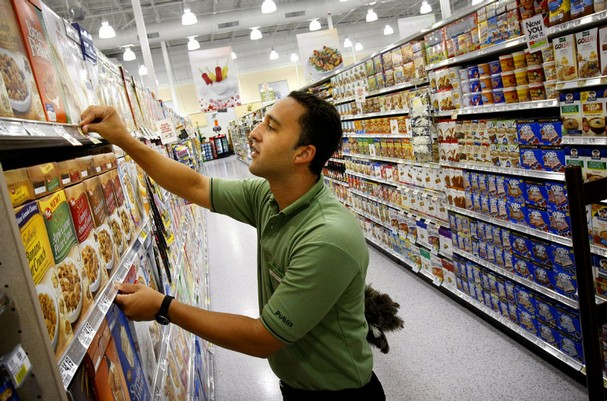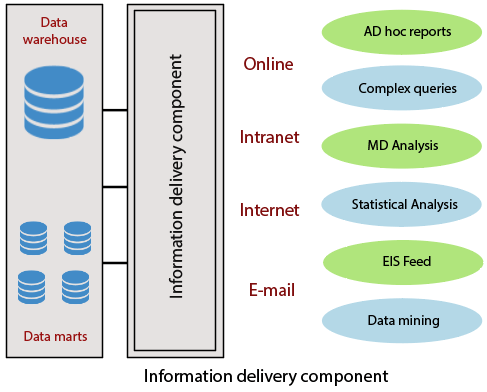Inventory Clerk (1 years diploma)
Inventory Clerk click here
Brief Job Description
Inventory Clerk in the Logistics industry is also known as Inventory Executive. Individuals in this role need
to collect the stored items list, perform physical counting of goods, cross checking the physical count with
the system numbers. Their responsibilities include locating missing items for reconciliation and preparing
detailed reports for the management.

Personal Attributes
This job requires the individual to have a detailed understanding of the different items stored in the
warehouse, keen observation skills to identify missing items and locate floating inventory in the
warehouse. The individual should also be skilled in accurately counting physical goods.
Minimum Educational Qualification &
Experience
10th Class
OR
8th Class (+ 2 years of ITI )
OR
8th Class (+ 1 year of ITI) with 1 Year of
experience relevant experience
OR
Certificate-NSQF (Loader/ Unloader – level 2)
with 1 Year of experience relevant experience
Minimum Level of Education for Training in
School
Pre-Requisite License or Training Identify goods based on labels. Most
companies have made this mandatory.
Minimum Job Entry Age 18 Years
Last Reviewed On NA
Next Review Date NA
NSQC Approval Date
Version 3.0
Description
This OS unit is about preparing for the days work.
Elements and Performance Criteria
Obtain schedule and inventory related information from supervisor
To be competent, the user/individual on the job must be able to:
PC1. understand the work schedule for the day from the supervisor.
PC2. obtain the list of stored items from the supervisor
PC3. get the list with location details along with the level of items in each pallet from the
supervisor.
PC4. based on the total number of stock keeping units (sku) and the total working days in a
month, determine the number of items to be counted daily.
Gather relevant information and perform inspection of work area and equipment
To be competent, the user/individual on the job must be able to:
PC5. depending on the inventory classification schemes, understand how many items of each
category are to be counted in a day.
PC6. collect and wear all the necessary personal protective equipment (ppe) as required by the
product or the environment
PC7. get the required material handling equipment (mhe) such as reach trucks and cages and
keep them ready
PC8. inspect the mhe to ensure that they are in good working condition
PC9. inspect the store area for any spillage, breakage or any other safety issues.
PC10. clean up spills or breakages in the store area

PC11. check stability and overloading of storage racks
Safety and Maintenance
To be competent, the user/individual on the job must be able to:
PC12. comply with safety regulations and procedures in case of fire hazards, biohazards, etc.
PC13. wear all safety equipment including protective gear, helmets etc.
PC14. follow organization procedures with respect to security, materials handling and accident
PC15. maintain distance between all on the floor personnel and stay within areas allotted for
warehouse personnel
PC16. adhere to security regulations of the company
PC17. comply with health and safety regulations and procedures in case of fire, chemical hazards,
bio-hazards, etc
Knowledge and Understanding (KU)
The individual on the job needs to know and understand:
KU1. knowledge of organizational products and procedures
KU2. role and responsibilities of workers on the shop floor
KU3. procedures for dealing with loss or damage to goods
KU4. risk and impact of not following defined procedures/work instructions
KU5. nature and characteristics of components in the warehouse
KU6. knowledge of all relevant safety and security procedures
KU7. knowledge of entire shop floor activities and persons in charge of each function
KU8. knowledge of coding system being used by the organization for labelling
KU9. knowledge of standard operating procedures (sops) and how to react in emergencies.
KU10. knowledge of stock keeping units (sku).
KU11. basic legal knowledge and compliance procedures
KU12. knowledge of material handling equipment that can be used for move and store different
components.
KU13. types of workplace hazards that one can encounter on the job and safe operating practices.
KU14. knowledge of technical specifications of goods in the warehouse
KU15. knowledge of possible difficulties in the inventory counting activity
Generic Skills (GS)
User/individual on the job needs to know how to:
GS1. prepare detailed reports about inventory counted and discrepancies
GS2. write down notes about accidents, damaged and missing goods.
GS3. ability to read and understand the schedule, list of stored inventory.
GS4. ability to read and match labels to products on the list
GS5. ability to read instructions/training directions in english.
GS6. communicate clearly in local language or english with supervisors and peers
GS7. provide advice and guidance to peers & juniors
GS8. communicate with team members for delays or updates in counting schedule.
GS9. adjust according to volume, capacity and man power needs during peak and non-peak hours.
GS10. ability to prioritize and execute tasks in a high-pressure environment
GS11. ability to meet inventory counting targets.
GS12. ability to change work plan to accommodate immediate requirements.
GS13. ability to prepare and submit detailed reports in a timely manner.
GS14. understand the customer timelines and ensure that they are met.

GS15. rapidly identify and address errors during inventory counting process
GS16. identify trends/common causes for errors and suggest possible solutions to management.
GS17. perform counting in a systematic manner.
GS18. suggest methods to improve storage activities.
GS19. ability to concentrate on the task at hand and complete it without errors.
GS20. pay attention to detail.
Description
This OS unit is about verifying stock levels and determining discrepancies.
Elements and Performance Criteria
Access stored goods, count and determine discrepancy
To be competent, the user/individual on the job must be able to:
PC1. from the stored items list, identify where the full pallets are located.
PC2. with the help of an mhe operator, use the cage and reach truck to go up and count items in
full pallets.
PC3. for all other pallets which are not full, have the mhe operator use the reach truck to bring the
pallet down and perform counting.
PC4. compare actually counted numbers with the numbers in the stored items list to identify
discrepancies if any.
Attempt reconciliation of missing goods.
To be competent, the user/individual on the job must be able to:
PC5. prepare a missing items list.
PC6. continue counting of different category items until the daily quota for each category is
achieved.
PC7. search through the warehouse to locate missing items
PC8. identify floating inventory and bin them as per company policy.
PC9. update missing items list, noting down items which items were reconciled
Safety and Maintenance
To be competent, the user/individual on the job must be able to:
PC10. comply with safety regulations and procedures in case of fire hazards, bio-hazards, etc.
PC11. wear all safety equipment including protective gear, helmets etc
PC12. follow organization procedures with respect to security, materials handling and accidents
PC13. maintain distance between all on the floor personnel and stay within areas allotted for
warehouse personnel
PC14. adhere to security regulations of the company
PC15. comply with health and safety regulations and procedures in case of fire, chemical hazards,
bio-hazards, etc
Knowledge and Understanding (KU)
The individual on the job needs to know and understand:
KU1. knowledge of organizational products and procedures
KU2. role and responsibilities of workers on the shop floor
KU3. procedures for dealing with loss or damage to goods
KU4. risk and impact of not following defined procedures/work instructions
KU5. nature and characteristics of components in the warehouse
KU6. knowledge of all relevant safety and security procedures
KU7. knowledge of entire shop floor activities and persons in charge of each function
KU8. knowledge of coding system being used by the organization for labelling
KU9. knowledge of standard operating procedures (sops) and how to react in emergencies.
KU10. knowledge of stock keeping units (sku)
KU11. knowledge of material handling equipment that can be used for move and store different
components
KU12. types of workplace hazards that one can encounter on the job and safe operating practices
KU13. knowledge of technical specifications of goods in the warehouse.
KU14. knowledge of possible difficulties in the inventory counting activity.

Generic Skills (GS)
User/individual on the job needs to know how to:
GS1. prepare detailed reports about inventory counted and discrepancies.
GS2. write down notes about accidents, damage and missing goods.
GS3. ability to read and understand schedule and list of inventory stored.
GS4. ability to read instructions/training directions in english.
GS5. ability to read and match labels to products on the list.
GS6. communicate clearly in local language or English with supervisors and peers.
GS7. provide advice and guidance to peers & juniors.
GS8. communicate with team members for delays or updates on counting schedule.
GS9. adjust according to volume, capacity and man power needs during peak and non-peak hours.
GS10. ability to prioritize and execute tasks in a high-pressure environment
GS11. ability to meet inventory counting targets.
GS12. ability to change work plan to accommodate immediate requirements.
GS13. ability to prepare and submit detailed reports in a timely manner.
GS14. understand the customer timelines and ensure that they are met.
GS15. rapidly identify and address errors during inventory counting process
GS16. identify trends/common causes for errors and suggest possible solutions to management.
GS17. perform counting in a systematic manner
.
GS18. suggest methods to improve storage activities.
GS19. ability to concentrate on the task at hand and complete it without errors.
GS20. pay attention to detail.
Elements and Performance Criteria
Carry out housekeeping
To be competent, the user/individual on the job must be able to:
PC1. return any ppe used to the respective storage rack.
PC2. return any mhe used to the respective storage area
PC3. perform a safety inspection of the storage area.
PC4. clean up any spillage or breakages
Report to Management
To be competent, the user/individual on the job must be able to:
PC5. discuss findings of inventory cycle count with deo and update information on the system
PC6. report discrepancies in counting and sku mix up along with any other issues faced to the
supervisor

PC7. prepare detailed reports for management as per the company policies to be used as audit
evidence.
Safety and Maintenance
To be competent, the user/individual on the job must be able to:
PC8. comply with safety regulations and procedures in case of fire hazards, biohazards, etc
PC9. wear all safety equipment including protective gear, helmets etc
PC10. follow organization procedures with respect to security, materials handling and accidents
PC11. maintain distance between all on the floor personnel and stay within areas allotted for
warehouse personnel
PC12. adhere to security regulations of the company
Knowledge and Understanding (KU)
The individual on the job needs to know and understand:
KU1. knowledge of organizational products and procedures
KU2. role and responsibilities of workers on the shop floor
KU3. procedures for dealing with loss or damage to goods
KU4. risk and impact of not following defined procedures/work instructions
KU5. nature and characteristics of components in the warehouse
KU6. knowledge of all relevant safety and security procedures
KU7. knowledge of entire shop floor activities and persons in charge of each function
KU8. knowledge of coding system being used by the organization for labelling
KU9. knowledge of standard operating procedures (sops) and how to react in emergencies
KU10. knowledge of stock keeping units (sku)
KU11. knowledge of material handling equipment that can be used for move and store different
components
KU12. types of workplace hazards that one can encounter on the job and safe operating practices
KU13. knowledge of technical specifications of goods in the warehouse.
KU14. knowledge of possible difficulties in the inventory counting activity.
Generic Skills (GS)
User/individual on the job needs to know how to:
GS1. prepare detailed reports about inventory counted and discrepancies.
GS2. write down notes about accidents, damage and missing goods.
GS3. ability to read and understand schedule and list of inventory stored.
GS4. ability to read instructions/training directions in english.
GS5. ability to read and match labels to products on the list.
GS6. communicate clearly in local language or english with supervisors and peers.
GS7. provide advice and guidance to peers & juniors.
GS8. communicate with team members for delays or updates on counting schedule.
GS9. adjust according to volume, capacity and man power needs during peak and non-peak hours.
GS10. ability to prioritize and execute tasks in a high-pressure environment
GS11. ability to meet inventory counting targets.
GS12. ability to change work plan to accommodate immediate requirements.
GS13. ability to prepare and submit detailed reports in a timely manner.
GS14. understand the customer timelines and ensure that they are met.
GS15. rapidly identify and address errors during inventory counting process
GS16. identify trends/common causes for errors and suggest possible solutions to management.
GS17. perform counting in a systematic manner.
GS18. suggest methods to improve storage activities.
GS19. ability to concentrate on the task at hand and complete it without errors.
GS20. pay attention to detail.
Description
This unit is about employability skills, Constitutional values, becoming a professional in the 21st Century,
digital, financial, and legal literacy, diversity and Inclusion, English and communication skills, customer
service, entrepreneurship, and apprenticeship, getting ready for jobs and career development.
Scope
The scope covers the following :
Introduction to Employability Skills
Constitutional values – Citizenship
Becoming a Professional in the 21st Century
Basic English Skills

Communication Skills
Diversity & Inclusion
Financial and Legal Literacy
Essential Digital Skills
Entrepreneurship
Customer Service
Getting ready for Apprenticeship & Jobs
Elements and Performance Criteria
Introduction to Employability Skills
To be competent, the user/individual on the job must be able to:
PC1. understand the significance of employability skills in meeting the job requirements
Constitutional values – Citizenship
To be competent, the user/individual on the job must be able to:
PC2. identify constitutional values, civic rights, duties, personal values and ethics and
environmentally sustainable practices
Becoming a Professional in the 21st Century
To be competent, the user/individual on the job must be able to:
PC3. explain 21st Century Skills such as Self-Awareness, Behavior Skills, Positive attitude, self motivation, problem-solving, creative thinking, time management, social and cultural
awareness, emotional awareness, continuous learning mindset etc.
Basic English Skills
To be competent, the user/individual on the job must be able to:
PC4. speak with others using some basic English phrases or sentences
Communication Skills
To be competent, the user/individual on the job must be able to:
PC5. follow good manners while communicating with others
PC6. work with others in a team
Diversity & Inclusion
To be competent, the user/individual on the job must be able to:
PC7. communicate and behave appropriately with all genders and PwD
PC8. report any issues related to sexual harassment
Financial and Legal Literacy
To be competent, the user/individual on the job must be able to:
PC9. use various financial products and services safely and securely
PC10. calculate income, expenses, savings etc.
PC11. approach the concerned authorities for any exploitation as per legal rights and laws
Essential Digital Skills
To be competent, the user/individual on the job must be able to:
PC12. operate digital devices and use its features and applications securely and safely
PC13. use internet and social media platforms securely and safely
Entrepreneurship
To be competent, the user/individual on the job must be able to:
PC14. identify and assess opportunities for potential business
PC15. identify sources for arranging money and associated financial and legal challenges
Customer Service
To be competent, the user/individual on the job must be able to:
PC16. identify different types of customers
PC17. identify customer needs and address them appropriately
PC18. follow appropriate hygiene and grooming standards
Getting ready for apprenticeship & Jobs
To be competent, the user/individual on the job must be able to:
PC19. create a basic biodata
PC20. search for suitable jobs and apply
PC21. identify and register apprenticeship opportunities as per requirement
Knowledge and Understanding (KU)
The individual on the job needs to know and understand:
KU1. need for employability skills
KU2. various constitutional and personal values
KU3. different environmentally sustainable practices and their importance
KU4. Twenty first (21st) century skills and their importance
KU5. how to use basic spoken English language
KU6. Do and don’t of effective communication
KU7. inclusivity and its importance
KU8. different types of disabilities and appropriate communication and behaviour towards PwD
KU9. different types of financial products and services
KU10. how to compute income and expenses
KU11. importance of maintaining safety and security in financial transactions
KU12. different legal rights and laws
KU13. how to operate digital devices and applications safely and securely
KU14. ways to identify business opportunities
KU15. types of customers and their needs
KU16. how to apply for a job and prepare for an interview
KU17. apprenticeship scheme and the process of registering on apprenticeship portal

Generic Skills (GS)
User/individual on the job needs to know how to:
GS1. communicate effectively using appropriate language
GS2. behave politely and appropriately with all
GS3. perform basic calculations
GS4. solve problems effectively
GS5. be careful and attentive at work
GS6. use time effectively
GS7. maintain hygiene and sanitization to avoid infection









